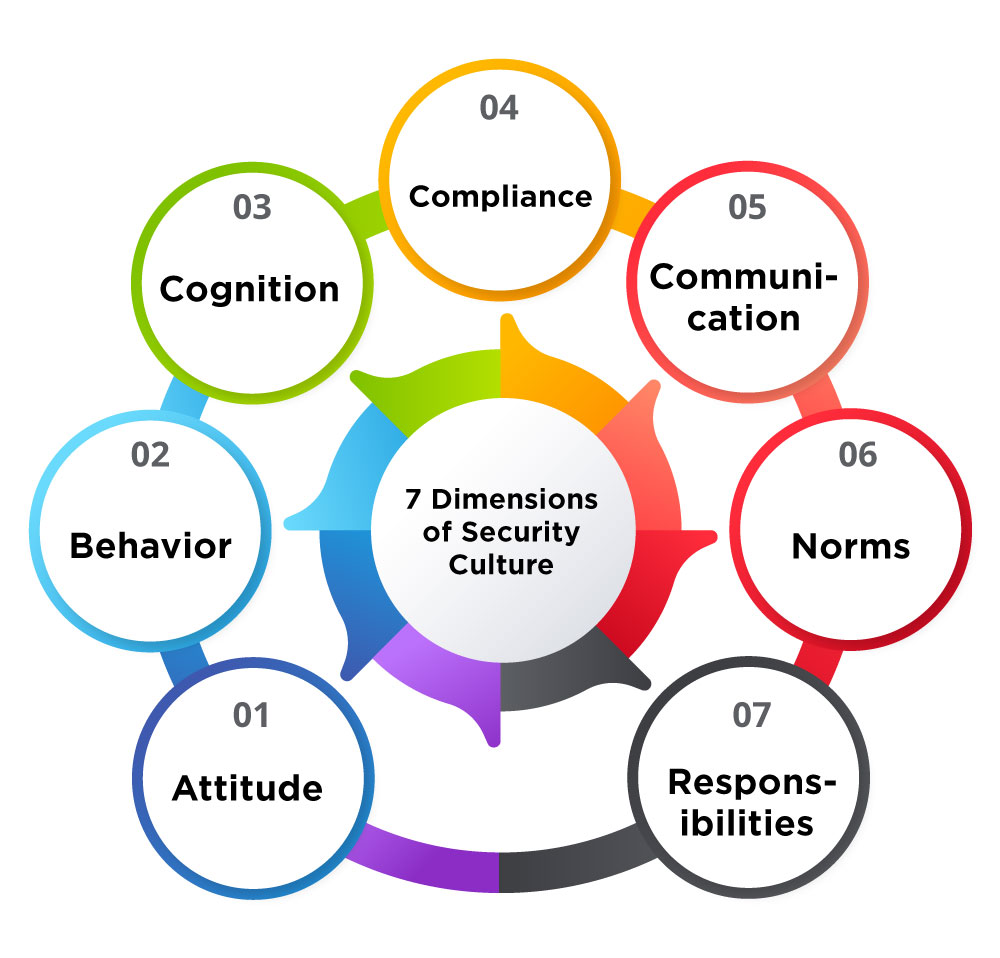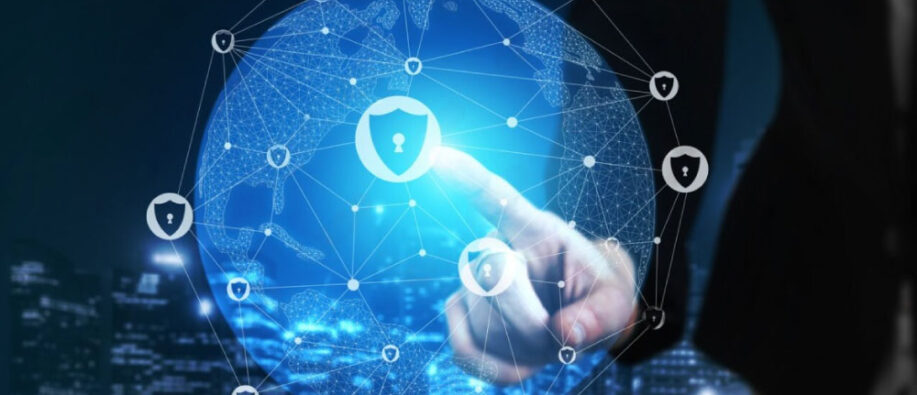Have you ever thought about how your daily actions shape your workplace’s security? Security isn’t just about fancy tech - it’s about mindset, behavior, and habits. When we all step up, we create a safer environment.
Let’s dive into the 7 dimensions of security culture and understand them one by one! As a bonus, we have added smart suggestions to implement each of the 7 dimensions of security culture - for the well-being of your organization. So, you must read till the end.
1. Attitude
One important consideration is the mindset of your staff towards security. Employees who have a bad attitude are far less likely to follow the rules and behave safely. To enhance employee behavior and, eventually, your security culture, it may be quite beneficial to develop strategies to cultivate favorable attitudes toward security.
How to do it? - By Building a Security Mindset
Security Champions:
Employees should be chosen to serve as "security champions" in each department. These individuals support teams in maintaining security focus, inspire others, and assist in propagating the security message.
Security Challenges:
Create challenges or quizzes that make security enjoyable. Employees may receive awards for identifying hazards, like phishing emails, or for offering solutions to strengthen security.
2. Behavior
Employee conduct is influenced by what they observe other employees doing. In a social setting, most people are prone to copy the actions they observe others modeling. Additionally, people are extremely prone to follow instructions from those in positions of power, which suggests that leadership should take an active role in security.
How to do it? - By Encouraging Good Security Actions
Small Rewards:
Encourage staff members who frequently adhere to security best practices, such as changing passwords on a regular basis or locking their screens when not at their desks, by giving them praise in the form of shout-outs or modest awards.
Track & Improve:
Utilize security technologies to monitor employee actions (such as clicking on doubtful links) and provide tailored advice or comments to assist them in developing better habits over time.
3. Cognition
The conduct of employees might be influenced by their knowledge. But just because someone knows doesn't imply that they care! Furthermore, actions don't necessarily follow from concern. We refer to this as the "knowledge-intention-behavior gap." Any security culture initiative should include training, but it's not the end of all.
Consider training as only one of many tools in your toolkit instead. Your CEOs and leadership teams should strongly support it, and you should ensure that your staff members are aware of the importance of security.
By implementing behavior design efforts and attempting to cultivate other areas of influence, such as reward and reinforcement systems, you may further enhance your training program.
How to do it? - By Helping Employees Understand Security Risks
VR/AR Training:
Employees can experience a breach firsthand by using augmented reality (AR) or virtual reality (VR) to generate realistic security simulations. This makes it simpler to comprehend the consequences of inadequate security procedures.
Storytelling:
Tell authentic stories of successful and unsuccessful security situations. Employees are better able to recall the dangers and the significance of adhering to security regulations as a result.

4. Compliance
To make sure that workers understand what is and is not acceptable, organizations require rules. Certain organizations are adept at putting rules and incentives into practice, whereas others are not.
If staff aren't following your security policies and procedures, it might be because they don't know about them, they're too complicated to follow, or you need additional tools and techniques to help with compliance.
How to do it? - By Making Sure Rules Are Followed
Security Accountability Partners:
Employees are paired as partners in accountability. They may help one another in maintaining compliance and check in with one another to see whether they're adhering to security regulations.
Automated Reminders:
Employ automated technologies that remind staff members of security-related duties, such as software updates or security audits, that they must perform as part of their regular job.
5. Communication
Communication is one of the abilities of outstanding leaders. You will frequently hear them reiterate the same vision in a variety of contexts and formats.
Effective leaders know how important it is to establish the agenda and reiterate the message so that all employees can relate and comprehend. Security is no different: If you want it to happen, make sure people talk about your beliefs and repeat them frequently.
How to do it? - By Keeping Everyone in the Loop
Instant Alerts via Chat:
Use internal messaging apps like Slack or chatbots to deliver security alerts in real time. This promptly notifies everyone of any changes or new risks.
Interactive Meetings:
Organize webinars or live Q&A sessions where staff members may ask leaders any security-related questions. This guarantees two-way, honest, and open conversation.
6. Norms
Norms are unwritten and unofficial group policies that are considered informal rules. In this place, these are "just the way things are done." Due to perceived peer pressure, people are regrettably more inclined to adhere to conventions than to your regulations.
How to do it? - By Setting Expectations for Security
Lead by Example:
Leaders must set an example for adhering to security procedures. They set the example for others by reporting phishing emails and implementing two-factor authentication.
Security Goals:
Make security a priority for staff members. Incorporate security goals, for instance, into their performance evaluations. This demonstrates how important security is and how everyone has responsibility for it.
7. Responsibilities
A company is good if all of its employees actively participate in the security program. Giving workers the freedom to decide on pertinent security issues while they are at work is a smart move.
Equally important is ensuring that staff members realize that even a small action can have a significant impact.
How to do it? - By Making Security Everyone’s Job
Role-Specific Playbooks:
Provide detailed security manuals outlining each department's unique duties. Sales staff, for example, concentrate on safeguarding client information, while IT manages the technical aspects.
Responsibility Dashboards:
Make use of dashboards that display each person's progress and security duties. Employees can more easily keep track of their tasks thanks to this, and supervisors can make sure everyone is on schedule.
Let’s Build a Security-First Workplace!
Security isn’t just the IT department’s job - it’s everyone’s job. When we build the right mindset, behaviors, and habits, we create a culture of safety. So, let’s take action, because a secure workplace starts with you! So, make security your top priority and start the process today! We hope our above blog content on 7 dimensions of security culture will help you to do so!
To consume more security-oriented and insight-giving blog content, which will help you to build a safe and secure organization, keep visiting us at SecureITWorld!
Also Read:
In-Demand Cybersecurity Jobs: Future Trends and Opportunities





